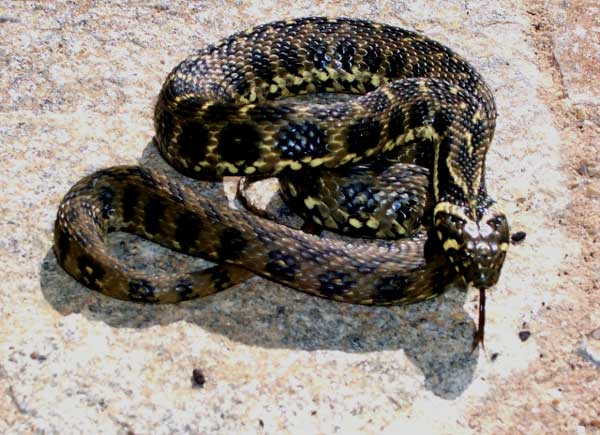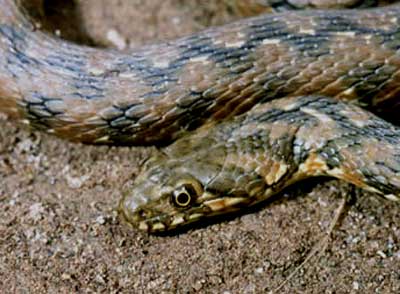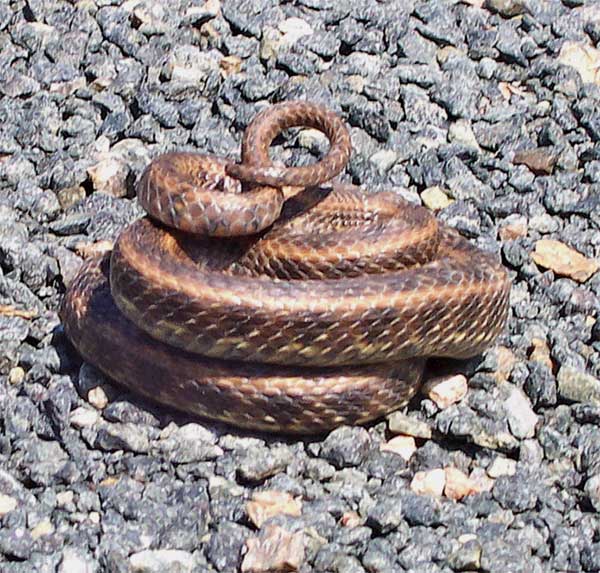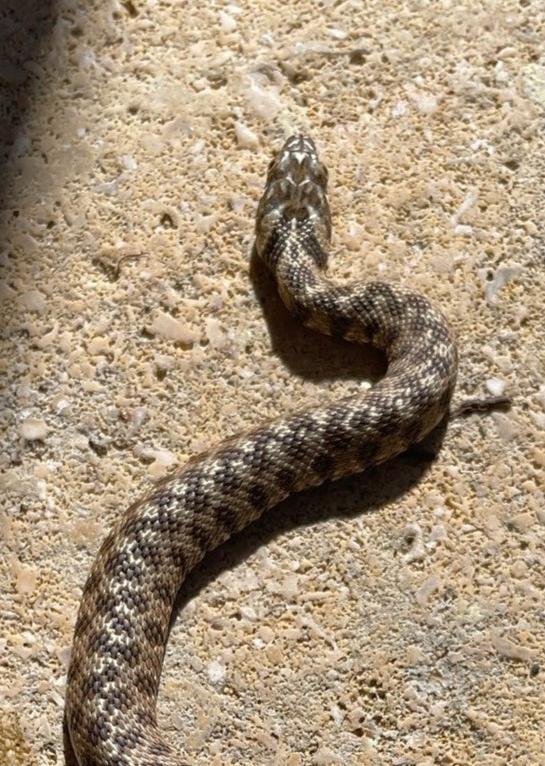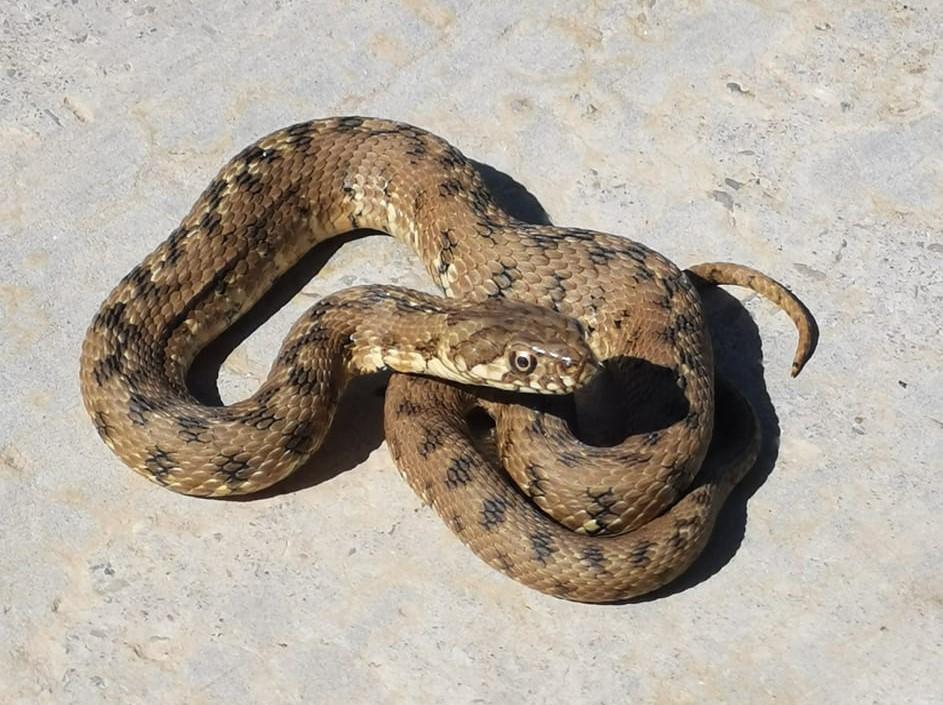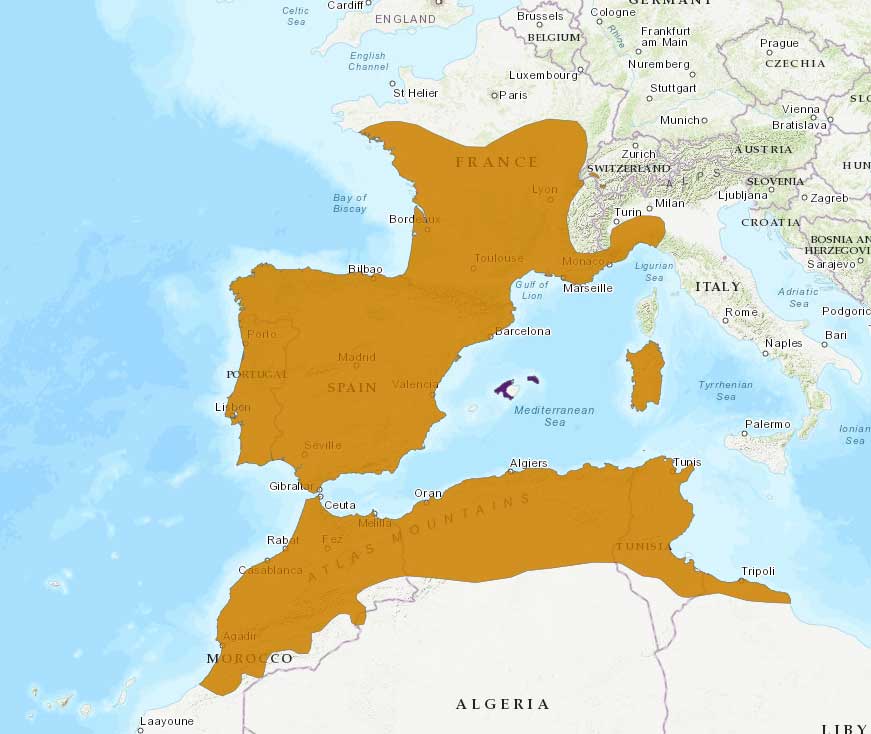Viperine snake
Natrix maura
Couleuvre vipérine
The Viperine snake is the smallest of the couleuvres to be found in France
They can be found throughout most of France
They are diurnal and are excellent swimmers
staying underwater for a considerable length of time or just resting in the water with their head protruding from the surface. Otherwise they can be seen sunning themselves by the waterside. In case of danger they slip away rapidly and silently, but when they are threatened they adopt a very similar intimidating pose to a Viper hissing loudly and jerking their heads in the direction of the threat and will even strike, but with their mouth closed. They will also emit an unpleasant scent from their anal glands.
They are a snake that often scares people when they see them in the water when they are paddling or bathing but they are completely harmless.
Hibernation is from October until March/April
either alone or in the company of other snakes, in a hole or beneath a pile of rocks. They are also incredibly resistant to cold surviving temperatures of minus 15 C. Coupling takes place in march/April, followed by laying of between 5 and 15 (sometimes 20) eggs in July in moist soil or an abandoned hole in the ground. After 4 to 6 weeks the young hatch out.
Populations in decline due to habitat loss and pollution from Domestic & urban waste water, Industrial & military effluents and Agricultural & forestry effluents.
All snakes in France benefit from full protected status
